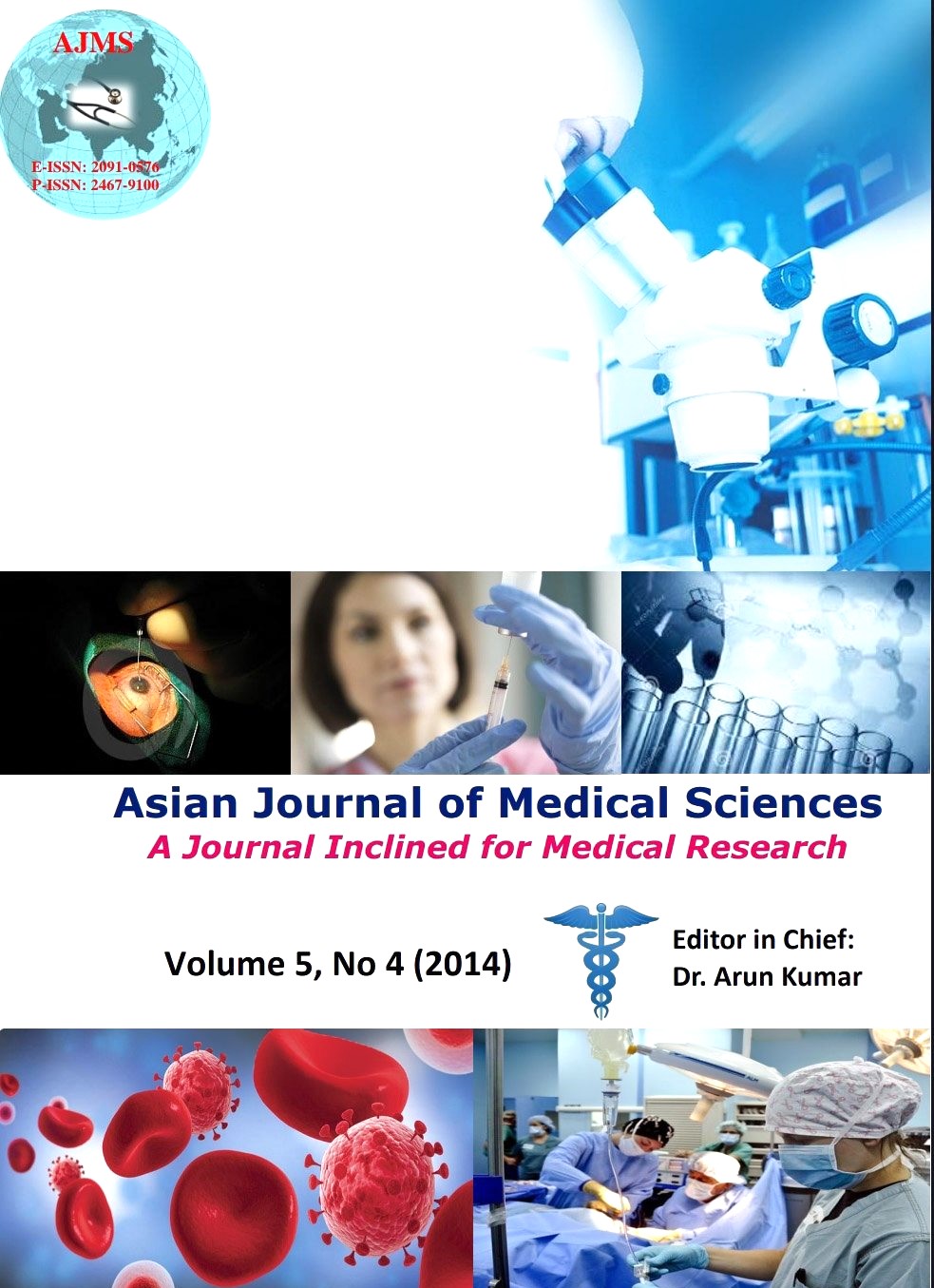Multidetector computed tomographic evaluation of maxillofacial trauma
Keywords:
Maxillofacial, Fractures, Computed tomography, TraumaAbstract
Introduction: Maxillofacial injuries are one of the most frequently encountered entities accounting for a large proportion of patients in emergency department. Present study was performed to assess the role of multidetector computed tomography (MDCT) in patients of maxillofacial trauma and to describe the spectrum of various patterns of injuries in maxillofacial region in this part of Nepal.
Methods: The study was carried out on a prospective basis over a period of one year. All the patients referred for evaluation of maxillofacial trauma were included in the study. MDCT was done in patients of maxillofacial injury and the data was recorded and analyzed. Volumetric MDCT scan of the maxillofacial region was performed in axial plane with multiplanar reconstruction in coronal and sagittal planes were obtained wherever required.
Results: Out of 60 patients of maxillofacial trauma 42 (70%) were males and 18 (30%) were females and age ranges from 12 to 70 years. The 11?30 years age group has the highest percentage (55%) of maxillofacial trauma, followed by 31?40 (20%). The common cause of injuries in our study was road traffic accidents (58.33%), fall from height (20%), physical assault (16.66%) and sport injuries (5%). Out of 60 patients there was total of 115 fractures. The frequency and types of fracture was as follows: orbital floor fracture in 21 (35%), maxillary sinus wall fracture in 18 (30%), nasal bone fracture in 17 (28.33%), jaw fracture in 15 (25%), zygomatic bone fracture in 13 (21.66%), orbital wall fracture in 11 (18.33%), naso?ethmoidal fractures in 9 (15%), frontal sinus fracture in 7 (11.66%), Lefort fracture in 1 (1.66%) and others 3 (5%). The highest percentage of fracture was of orbital floor (35%) followed by fracture of wall of maxillary sinus (30%) and nasal bone fracture (28.33%). Three cases had simultaneous injury of the globe and cervical spine; they underwent computed tomography/magnetic resonance imaging for the assessment of spine.
Conclusion: Injuries to maxillofacial region is one of the most common emergency requiring accurate and early diagnosis for preventing unnecessary investigations and proper management. MDCT has high sensitivity and specificity and has high accuracy for detection of fracture.
DOI: http://dx.doi.org/10.3126/ajms.v5i4.9561
Asian Journal of Medical Sciences 2014 Vol.5(4); 39-43
Downloads
Downloads
Additional Files
Published
How to Cite
Issue
Section
License
Authors who publish with this journal agree to the following terms:
- The journal holds copyright and publishes the work under a Creative Commons CC-BY-NC license that permits use, distribution and reprduction in any medium, provided the original work is properly cited and is not used for commercial purposes. The journal should be recognised as the original publisher of this work.
- Authors are able to enter into separate, additional contractual arrangements for the non-exclusive distribution of the journal's published version of the work (e.g., post it to an institutional repository or publish it in a book), with an acknowledgement of its initial publication in this journal.
- Authors are permitted and encouraged to post their work online (e.g., in institutional repositories or on their website) prior to and during the submission process, as it can lead to productive exchanges, as well as earlier and greater citation of published work (See The Effect of Open Access).




